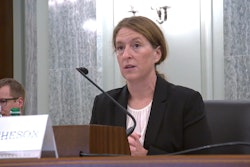The Federal Motor Carrier Safety Administration on Monday will publish its updated Medical Examiner’s Handbook (MEH), which includes updates to the Medical Advisory Criteria published in the Code of Federal Regulations.
The MEH provides information about regulatory requirements and guidance to medical examiners (MEs) listed on FMCSA’s National Registry of Certified Medical Examiners, who perform DOT physicals for commercial drivers of all stripes. The January 2024 edition of the MEH will replace all previous handbook editions.
The agency noted that the MEH "is a guidance document that does not amend any agency regulation or establish any requirements for MEs or drivers not found in existing regulations."
FMCSA first posted the MEH to its website in 2008, intended to provide guidance to doctors on the physical qualification standards in regulation, and the conducting of the DOT physical exam. FMCSA has also issued guidance for MEs in the form of Medical Advisory Criteria, now published at 49 CFR part 391, Appendix A.
The handbook has been officially withdrawn for nearly a decade at this point. In 2015, because some of the information was obsolete or was prescriptive in nature, FMCSA said it informed examiners and training organizations that the handbook was no longer in use and should not be considered as agency guidance.

The agency in 2022 released a draft handbook with proposed changes, then accepted public comments on the draft.
The new handbook includes “numerous changes to improve the overall clarity, quality and substance" of the book, "based on suggestions from commenters,” the agency said.
Sleep apnea in focus
Of particular concern to truck drivers over the last decade has been guidance around the obstructive sleep apnea (OSA) condition. In 2013, after an explosion of referrals of medical-card candidates for apnea testing and treatment during DOT physicals, and considerable confusion around the issue, Congress passed legislation that forbade FMCSA to pursue official apnea guidelines outside of a full rulemaking process.
An early draft handbook, nonetheless, contained detailed guidelines similar to those the agency had written when it was pursuing a rulemaking (later withdrawn) around the condition. Overdrive reported on what followed as the agency removed the apnea criteria amid Medical Review Board meetings and debate around the handbook. A later, 2022 draft handbook then included simply a link to those same sleep apnea screening recommendations issued in 2016 by FMCSA’s advisory Medical Review Board and Motor Carrier Safety Advisory Committee.
The agency is continuing to include that link to apnea information for examiners in the final version, with added text to state that the joint recommendations include information on screening and diagnosing individuals with moderate-to-severe OSA, and not just certifying such individuals.
[Related: How Congress tied FMCSA's/docs' hands on sleep apnea]
FMCSA noted it went “to great efforts throughout the MEH to distinguish between regulatory requirements and non-binding guidance,” adding that the handbook makes clear that doctors are free to choose whether to utilize guidance and recommendations as a basis for decision-making. The agency further noted that because the revised handbook is not a rulemaking proceeding, it can't accommodate requests by certain commenters to require examiners to use specific, objective criteria for sleep apnea screening, treatment and treatment evaluation.
The handbook clearly states, too, that federal regulations "do not include requirements for MEs to screen individuals for OSA or to recommend that an individual be referred for OSA testing," FMCSA said, "and do not include preferred diagnostic testing methods, treatment methods, or requirements by which to assess compliance with treatment. Instead, the MEH presents various considerations for ME[s] when making a physical qualification determination.”
The agency added that “the MEH guidance leaves it to the ME to determine whether an individual needs to be screened [for sleep apnea] based on the individual circumstances.”
[Related: Is sleep apnea on a path to regulation in trucking?]
Other updates: Hypertension, diabetes
The updated handbook also removes the hypertension (high blood pressure) table -- because it had “the potential to create confusion.” Instead, FMCSA will continue with the guidance in the Medical Advisory Criteria related to hypertension.
FMCSA also provided additional information related to individuals with non-insulin-treated diabetes mellitus, including considerations for MEs when making a physical qualification determination for these individuals. The agency said it is working on getting approval from the Office of Management and Budget for a new Non-Insulin-Treated Diabetes Mellitus Assessment Form which, if approved, MEs could use as a voluntary, optional tool to request additional information, with a driver's consent, when making a physical qualification determination.
The agency said it expects to review the guidance within the handbook no later than five years after it’s published and will consider at that time whether it should be withdrawn, reissued or incorporated into regulations.
[Related: POLL: Owner-operators, do you carry health insurance today?]











